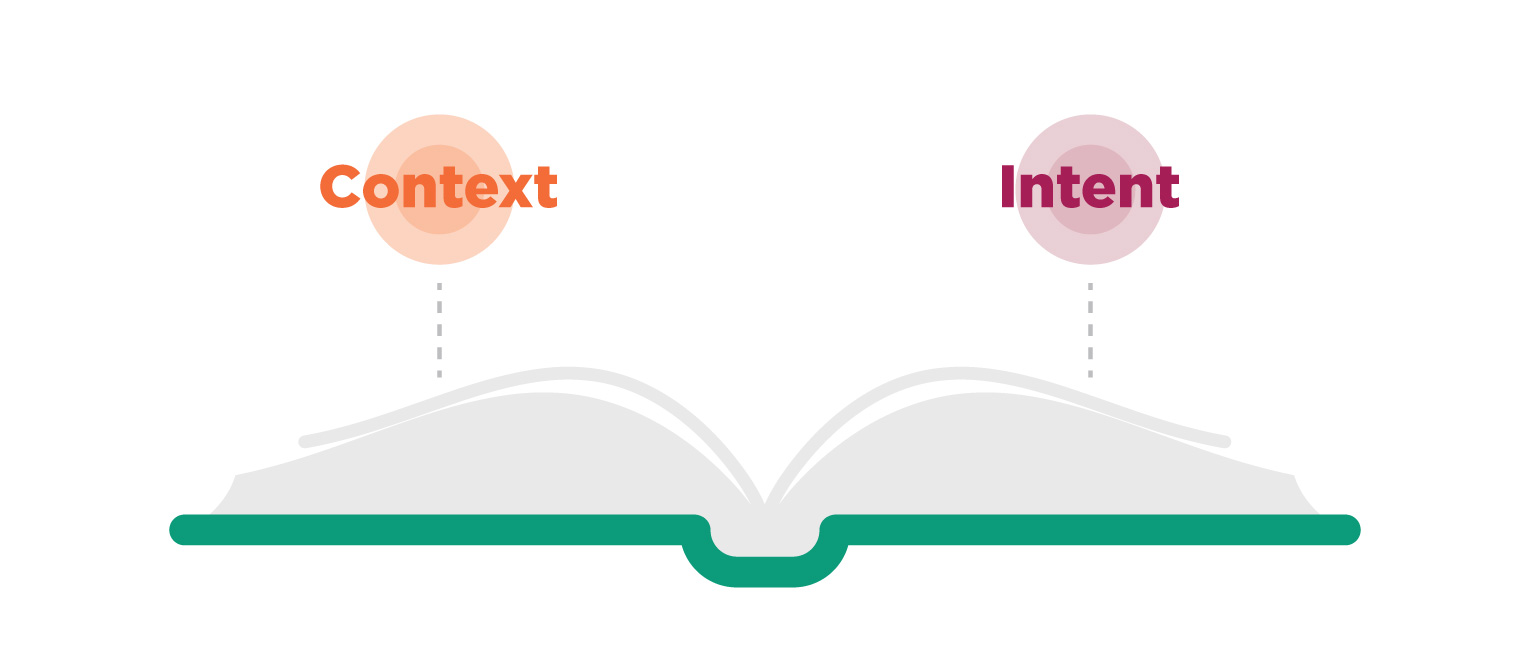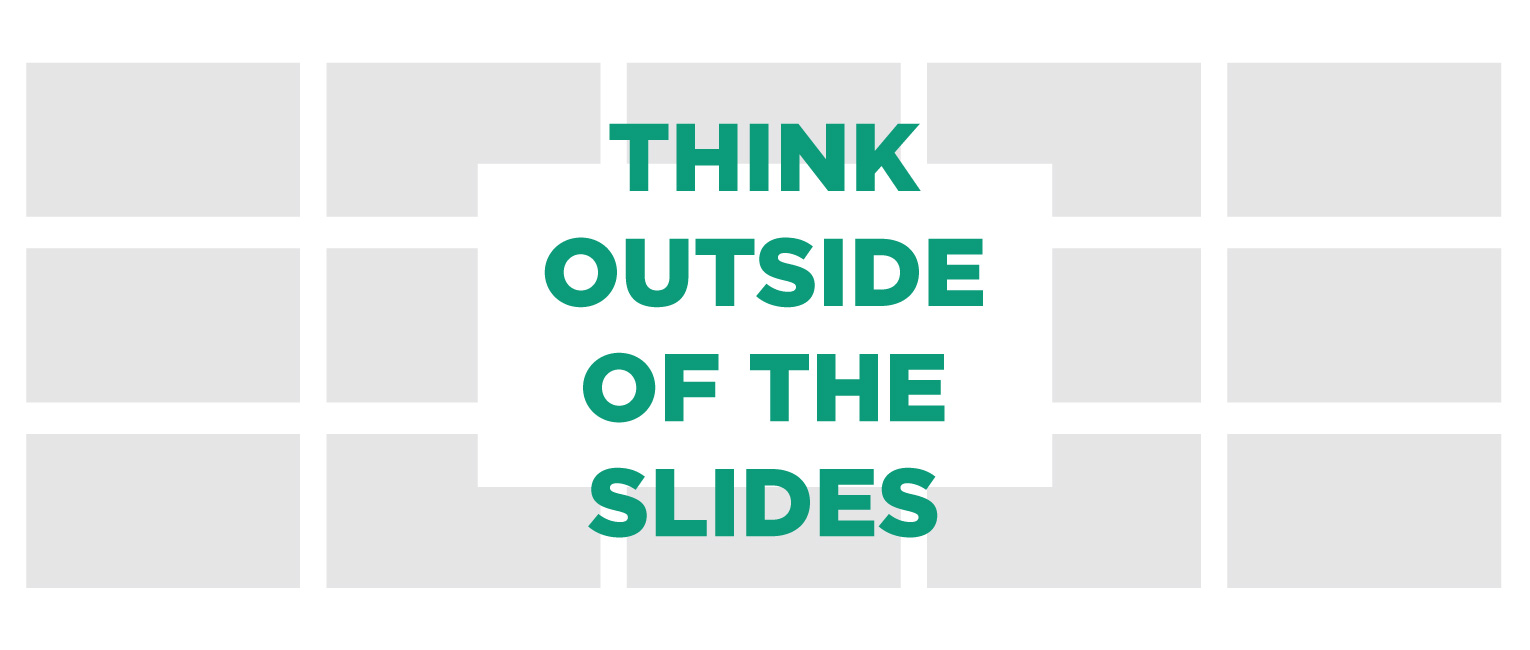We craft experiences with a number of different tools, and Presentation Design is one of the key assets we create to keep your audience engaged. Below, we’ll look at just a few ways our visual storytelling process has been successful. These collaborative efforts and small investments of time up front can ensure an impactful product, and maximize your ROI.
Define the context and intent of your story
Context and Intent are two of the most valuable elements in understanding what visuals we will use to tell your story. They enable us to do our job as designers and give us the substance we need to sink our teeth into a project.

Context describes the demographics of your audience as well as the current “climate” of your company and the world. Is this audience hearing this message for the first time? Or are you relaying a familiar message and need a new perspective? Has there been a recent “big win” or a new challenge? Context is also how the presentation is delivered. Is the audience in one place? Or are they tuning in from separate locations? Is this a one-on-one pitch or is it to an audience of thousands?
Intent is the purpose of your presentation; what you want the outcome to be. What is your call to action? How do you want your audience to describe your event? What emotions do you want them to feel? We can reverse engineer the presentation if we know the end goal or destination.
Knowing these kinds of nuances can affect the overall look and feel of the presentation by influencing things like the number of slides, subject matter of the photography, and even the color palette.
Develop the flow outside of presentation software
We believe content drives design, otherwise we’d just provide pretty imagery simply for the sake of aesthetics, with no intent. Focusing on high-level content first instead of granular slide choices produces a more impactful presentation.

Using slide-based software naturally shifts thinking to a slide-focused approach. We suggest outlining your initial thoughts about the presentation outside of any presentation software (PowerPoint, Keynote, Google Slides, etc.) to break the mold of the title+subtitle+bullet point formula. Our clients have used Word documents, Excel spreadsheets, and other non-presentation tools to capture themes, subject matter, emotions, visual direction, and more. Use something that you are comfortable with and keep it easy.
This process allows us to illustrate your story, and helps us understand the characters, key plot moments, and even the lesson in between the lines.
Design with simplicity in mind
PowerPoint is not dead. However, the age of wordart, clipart, cheesy “page-turning” transitions and spinning animations is over. One of the easiest ways to elevate your presentation is to minimize and condense.
Don’t be afraid to have only one word on a slide or a strong statement stand for itself. If a slide seems too dense, split it up into more digestible chunks of information.

Filling the slide with dense charts and over-indexing information will overwhelm and distract your audience. Instead, pick out a key theme and support it with one or two critical data points. Create a scenario or a hypothetical customer to show the human aspect of the data you are talking about.
We tend to think in terms of “scenes” instead of slides, an approach that produces presentations that feel more narrative than academic. Sell the good night sleep, not the mattress.
Pro Tip: Use a dark slide background versus the default white. This separates your presentation from the bland slides of yester-year. It is also easier on the viewers’ eyes, especially when looking at screens close up.
The new normal
While your audience may view your event from their couch or home office – rather than from a seat in a ballroom, surrounded by their peers – they still need to hear your story, and your intent to reach them is the same. This means that visual support, presentation design and video content are more important than ever.
Your audience deserves to see your message at it’s best. Surprise them, delight them, and impress them with our strong design, thoughtful animation, and customized assets. Let us transform your series of slides into a visual experience to bring the most value to your brand and engage your audience.
About the author
Ross Van Balen is Staging Solutions’ Senior Graphic Designer. He develops graphic concepts for events and experiences. Ross applies a holistic approach to design and creates a constellation of visual assets, from media collateral to branding touchpoints to printed materials. He is passionate about All Things Branded, and steers naming, rebranding, visual systems, and messaging efforts for us and for our clients.


